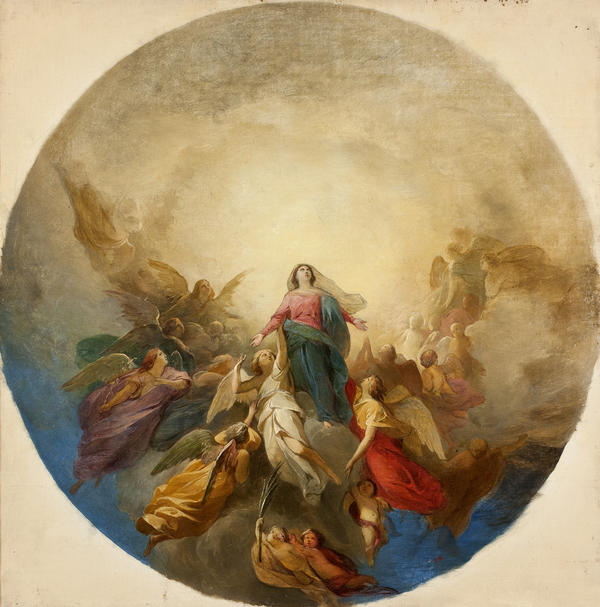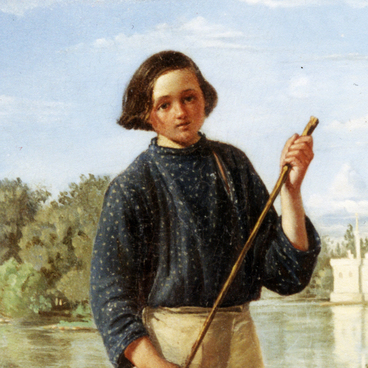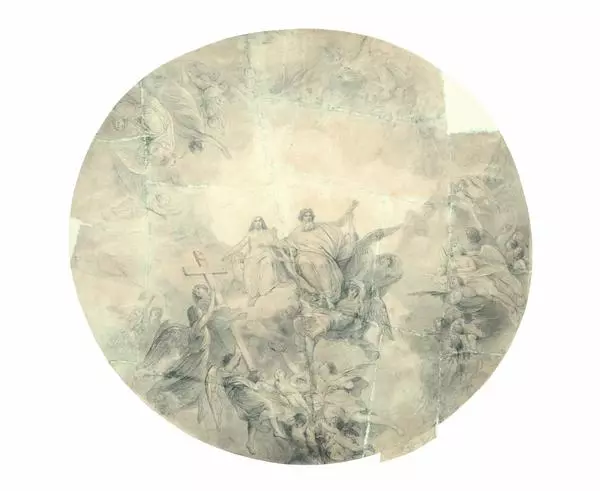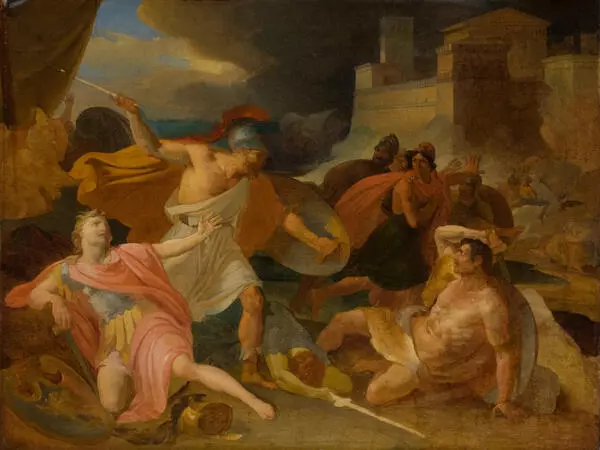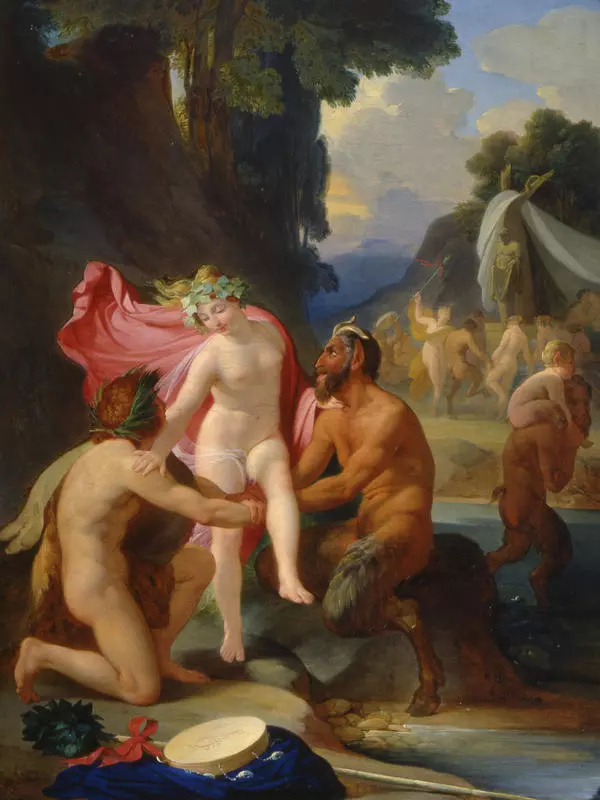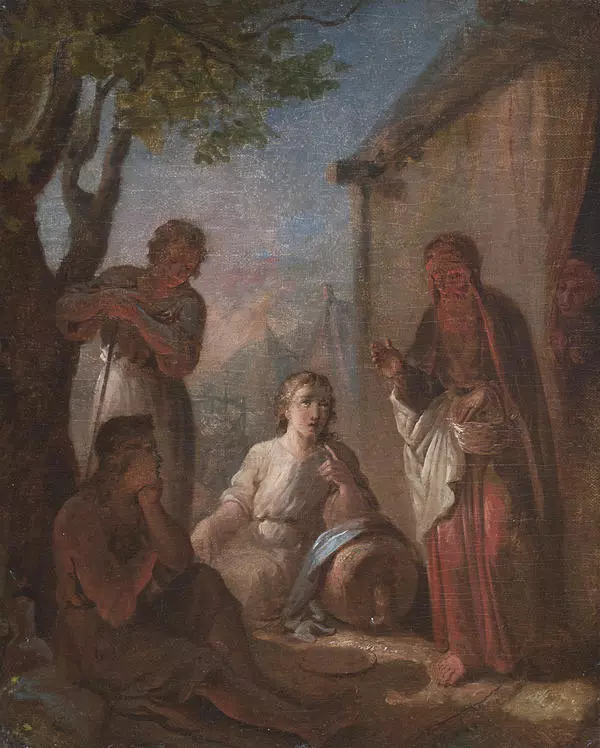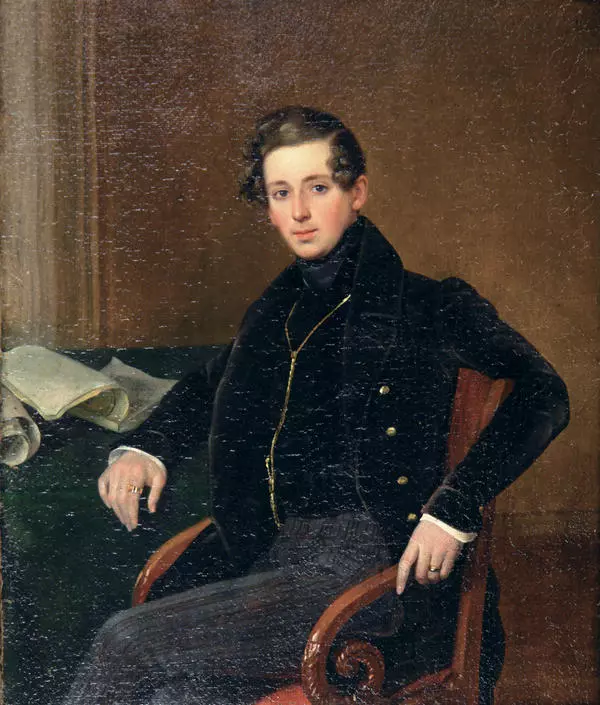In the 40s and the first half of the 50s of 19th century, the best-known academic artists were busy with a grand project - they were painting St. Isaac’s Cathedral. The decorative monumental painting of the cathedral is, in a sense, a monument to the epoch, and the Russian artists made an invaluable contribution to its decoration. The cathedral stores one hundred pictures and plafonds representing the best samples of the mid19th century Russian monumental painting. Auguste Montferrand, the chief architect of the cathedral, believed that the painting of the cathedral should follow the traditions of the great Italian school of the 17th century regarding themes, their treatment and compositions, which was consistent with the huge dimensions of the cathedral. Inspired by the masterpieces of the great baroque masters, the painters of St. Isaac’s Cathedral were supposed to strictly follow the requirements of the Synod regarding composition, theme, and subjects.
Fourteen well-known history painters were invited: painting of the upper vault of the dome and the space under the dome was entrusted to Karl Bruyllov; Fyodor Bruni was offered the vaults and the attic on the ends of the big nave. Petr Vasilyevich Basin seemed to have got the biggest amount of work. He fully painted the side altars of St. Alexander Nevsky and of the Great Martyr St. Catherine, also a huge composition of the Sermon on the Mount above the southern door of the cathedral. In the domes of both side altars, he painted plafonds the themes of which are not related to the main themes of the side altars. The theme of the Alexander Nevsky side altar plafond is the Lord of Sabaoth Carried by the Angels; the St. Catherine dome is decorated with the Ascension of the Mother of God plafond. The sketches of both domes have been preserved; the former is with the Tretyakov Gallery, the latter – with the Radishchev Museum.
Placing the Ascension of the Mother of God composition in the dome has a long tradition rooted in the Renaissance times. For many artists of the academic school, the perfect plafond to be guided by was the plafond of the main dome of the Parma Cathedral done by Correggio. Basin’s sketch shows his knowledge of the classical examples which he used to create it. Compositionally, he stuck to the principle of placing his figures diagonally, which makes the masses more dynamic.
The main direction of the movement – from the viewer upwards to the skies – is highlighted by colour and emphasised with chiaroscuro contrasts, bright splashes of the drapes form a triangle the apex of which is the figure of the Mother of God. The sense of lightness and incorporeality of the ascending figures is created by the prevailing grey-blue tone of the sketch that unites the figures of the angels, the cherubs, the Mother of God, the clouds and the skies. The final version of the plafond is markedly different from the sketch – the figures have become bigger, the figure of the Mother of God has been shifted closer to the centre, and the plafond in general has been populated with more figures. Having acquired more expressive plastique it has lost its spatial freedom characteristic of the sketch.

